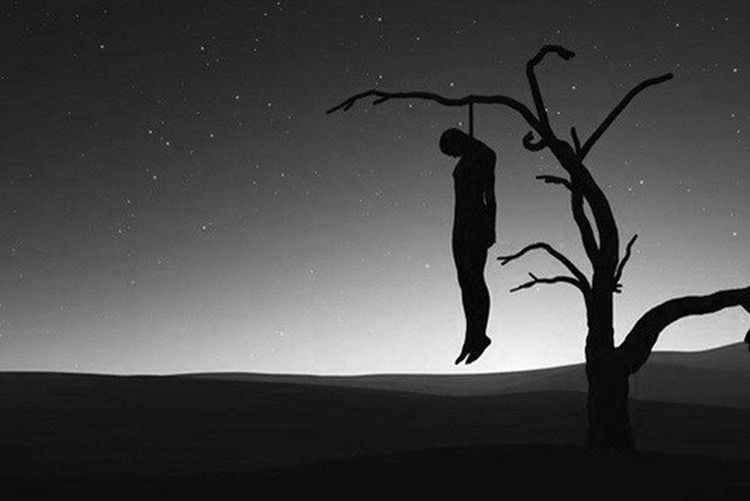This article is authored by M.SC., Dr. Phạm Đức Lượng - Emergency Department, Vinmec Times City International Hospital.
Hanging-induced asphyxiation (or ligature strangulation) results from severe neck compression by a rope or similar object, with the weight of the victim’s body contributing to the pressure.
1. Causes of ligature strangulation
Strangulations incidents may arise from the following circumstances:
- Suicidal hanging involves intentionally tying a rope or noose around the neck, suspending it from a height, and tightening the noose under the body’s weight. This method is commonly chosen due to its simplicity, requiring minimal technical skill and readily available materials, making suicide incidents harder to prevent.The fatality rate is high, reaching up to 70% of cases.
- Deceased victims are usually found either still hanging or on the scene’s surface after the rope has broken from tension. Survivors from rope breakage or timely intervention may sustain severe injuries, including cerebral hypoxia (potentially causing permanent brain damage), laryngeal fractures, cervical spine fractures, clavicle fractures, pharyngeal tears, or carotid artery trauma.
- Accidental Strangulation rarely occurs, but may happen unintentionally, such as when clothing or ties become entangled in machinery.
- Homicide: rarely occurs.
- Execution: still practiced in a few countries.
2. Types of Hanging Strangulation
- Complete Hanging.
- Incomplete Hanging (a part of the body such as feet, remains in contact with the ground).
- Standing hanging
- Kneeling hanging
- Sitting hanging
- Lying hanging

3. Stages of Death in Hanging Strangulation
- Stimulation Stage: Neck pain, tinnitus, dizziness, visual disturbances ("seeing stars"), and unconsciousness.
- Convulsive Stage: Occurs within 1–2 minutes, characterized by convulsions in the face, hands, and legs. This stage may leave marks on body prominences or cause the rope to break.
- Terminal Stage: Weak breathing, irregular heartbeats, and eventual death. Muscle relaxation may accompany these signs.
4. Mechanisms of Death in Hanging
Hanging may result in death in any position due to the following:
- Severe compression by the rope causes complex and combined effects on the neck region.
- Three Primary Mechanisms of Fatality: Vascular compression in the neck, airway compression and nerve compression in the neck
* Vascular Compression in the Neck: Disrupts blood flow to and from the brain, leading to sudden cerebral hypoxia and loss of consciousness.
* Nerve Compression in the Neck: Affects the carotid sinus, vagus nerve, and cervical sympathetic chain along the carotid artery.
* Airway Compression: Secondary to vascular obstruction, causing suffocation by compressing the pharynx and tongue root.
5. Signs of a Hanging Victim
- Presence of a rope or similar material tightly wrapped around the neck.
- Marks around the neck (e.g., redness, bruising) after the noose is removed.
- Altered consciousness or unconsciousness.
- Cyanosis (bluish-gray discoloration of the skin).
- Irregular breathing or apnea.
- Engorged neck veins, facial swelling.
- Petechiae (tiny red spots) on the face or sclera.

6. Emergency Priorities
- Restore adequate respiration.
- Arrange for rapid transportation to a medical facility.
7. Steps for Managing Strangling Asphyxia
- Secure the scene and immediately loosen or remove the noose from the victim’s neck.If the victim is still hanging, lift their body to reduce tension on the neck before cutting or untying the rope.Exercise caution to prevent injuries to the rescuer and the victim, as unconscious victims can be particularly heavy.
- Contact emergency services by dialing 115 or request immediate medical assistance
- Lay the victim flat on a solid surface.
- Check breathing and pulse.
- If cardiac arrest is present, begin chest compressions and artificial respiration immediately.
- If breathing has ceased but the heart is still beating, perform artificial respiration.
- If the victim is breathing and has a pulse, place them in a recovery position and monitor vital signs (consciousness, breathing, and pulse) until professional help arrives.
8. Important Precautions During First Aid
- Victims are at high risk for cervical spine injuries; first-responders should avoid unnecessary movement to the victim’s neck.
- Try to preserve the scene. Please do not alter or destroy items such as the knotted rope, as these may serve as evidence for law enforcement.
For consultation and medical services at Vinmec hospitals nationwide, visit the website (vinmec.com) to book an appointment.
Please dial HOTLINE for more information or register for an appointment HERE. Download MyVinmec app to make appointments faster and to manage your bookings easily.
To arrange an appointment, please call HOTLINE or make your reservation directly HERE. You may also download the MyVinmec app to schedule appointments faster and manage your reservations more conveniently.






